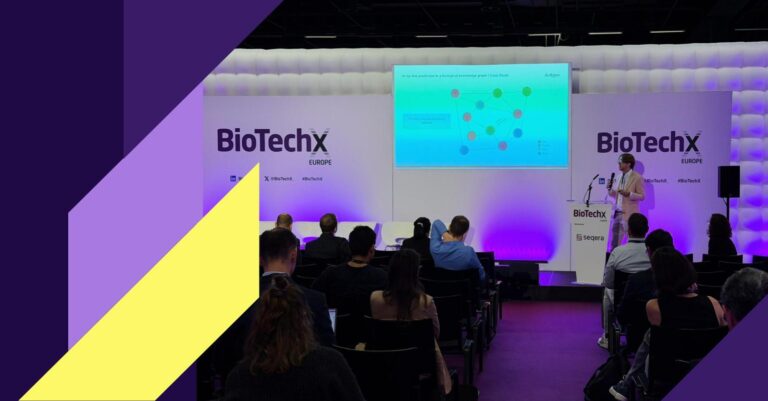Biologics have come a long way, from first-generation monoclonal antibodies to highly engineered molecules designed with precision in mind. Today’s biologics are smarter, more specialized, and increasingly patient-specific. So what is next? In this post, we explore the key scientific and clinical shifts shaping the future of biologics and why targeted therapies are redefining modern medicine.
A 30-Year Evolution of Biologics
Biologics are therapeutic products derived from living organisms, encompassing various substances such as proteins, nucleic acids, and cells. These complex molecules target specific biological processes, particularly in treating autoimmune disorders and cancers. Biologics are distinct from traditional chemically synthesized drugs because they are produced in living systems, such as microorganisms or animal cells, making their manufacturing more complex and costly than conventional drugs.
The FDA began authorizing biologics in 1982 when human insulin, as the first biological product, received approval. Over the past three decades, biological therapeutics have evolved from niche therapies into a cornerstone of treatment across oncology, autoimmune diseases, and rare disorders. Biologics have significantly improved outcomes for patients who did not respond to traditional treatments, especially in chronic and complex diseases (Garud et al., 2024; Doherty et al., 2022).
In ulcerative colitis, for example, increased biologic use has led to a marked reduction in surgical interventions like colectomy (Doherty et al., 2022).
Advances in biotechnology, such as DNA recombination and protein engineering, have enabled the development of safer, more effective therapeutics with enhanced selectivity and stability.
Following the progress in biologics research, manufacturing has become more demanding, requiring specialized facilities and careful attention to stability and delivery (McGonigle, 2024; Saylor, 2014). Formulation science and drug design are now integral to early development stages.
Enter the Age of Multi-Functional Molecules
The novel biologics expand far beyond monoclonal antibodies. Biologics such as bispecific antibodies, antibody-drug conjugates (ADCs), and fusion proteins represent the forefront of next-generation therapies, especially in cancer treatment. They are characterized by improved specificity, efficacy, and safety by combining targeting and therapeutic functions in novel ways.
Bispecific antibodies (BsAbs) bind two different targets simultaneously, often bridging immune cells with tumor cells to amplify immune-mediated killing, increasing specificity and reducing resistance (Lancman et al., 2020; Szijj & Chudasama, 2021; Maruani, 2018; Hong et al., 2023).
We know over 100 BsAbs formats, with several FDA-approved, many more in clinical trials, and multispecific molecules, such as trispecific antibodies (targeting three molecules), emerge on the horizon (Lancman et al., 2020; Szijj & Chudasama, 2021; Maruani, 2018; Hong et al., 2023).
Antibody-drug conjugates (ADCs) are antibodies armed with cytotoxic payloads that deliver the drug directly into diseased cells (e.g., tumor), reducing systemic toxicity (Lancman et al., 2020; Rathi & Meibohm, 2015; Tsuchikama et al., 2024; Hong et al., 2023).
Hundreds of ADCs are in development, with several approved for cancer therapy. BsADCs, which combine bispecific targeting with cytotoxic payloads, are in early clinical stages and show improved efficacy and specificity (Gu et al., 2024; Hong et al., 2023; Wang et al., 2024; Zhong et al., 2023; Shang et al., 2022). Novel ADC formats include:
- bispecific ADCs (BsADCs),
- conditionally active ADCs,
- immune-stimulating ADCs,
- and dual-drug ADCs.
Each type is designed to overcome resistance, tumor heterogeneity, and side effects (Tsuchikama et al., 2024; Gu et al., 2024; Hong et al., 2023).
Finally, researchers also developed a class of molecules named fusion proteins. These therapeutics combine antibody fragments (predominantly Fc region) with other functional protein domains to enhance targeting or immune activation (Rathi & Meibohm, 2015). Ongoing research concentrates on nanobodies and other novel scaffolds for optimizing pharmacokinetics and therapeutic effects (Rathi & Meibohm, 2015).
Biologic Type | Key Features & Innovations | Example Targets/Applications |
|---|---|---|
Bispecific Antibodies | Bind two targets, recruit immune cells, new trispecific formats | BCMAxCD3, CD38xCD3, HER2xCD3, TROP2xEGFR, PD1xPD-L1 |
ADCs | Antibody + cytotoxic drug, new dual-drug/immune-stimulating/conditionally active formats | HER2, TROP2, SLC3A2, PD-L1 |
Fusion Proteins | Antibody-based proteins fused with other functional domains or proteins | GLP1R, CD80 / CD86, Transforming growth factor beta (TGF-β) superfamily ligands |
All these innovative approaches expand the therapeutic landscape, addressing previous limitations and broadening patient benefits.
From "One-Size-Fits-All" to Targeted Therapies
Thanks to genomics and advanced molecular profiling, biologics can now be personalized to the individual. This is the foundation of modern targeted therapies: treatments tailored to genetic mutations, immune signatures, and even subcellular targets, enabling improved outcomes and safety profiles.
Next-generation sequencing and biomarker analysis now allow identification of unique genetic, proteomic, and immune features in each patient’s disease, supporting the selection of therapies that specifically target these abnormalities (Adashek et al., 2020; Tsimberidou et al., 2020; Subbiah & Kurzrock, 2018; Manzari et al., 2021; Hua et al., 2021; Zhu et al., 2024; Chen, 2017).
Notable examples of personalization in medicine:
- Molecular subtyping in breast cancer, where precision therapies (e.g., endocrine therapy, CDK4/6 inhibitors, immunotherapy, tyrosine kinase inhibitors) have nearly doubled progression-free survival for HR+/HER2- patients (Zhu et al., 2024).
- Gene-directed (tissue-agnostic) therapies use adaptive designs to match therapies to patient profiles based on molecular markers, regardless of cancer type (Tsimberidou et al., 2020; Subbiah & Kurzrock, 2018).
- Organelle-targeted and advanced delivery systems direct drugs to specific cellular compartments, reducing toxicity and improving efficacy (Manzari et al., 2021; Yang et al., 2022).
- Precision dosing based on biomarkers enables individualized drug dosing to optimize efficacy and reduce toxicity (Polasek & Peck, 2024).
Teplizumab and the Future of Disease Prevention
Teplizumab (Tzield) is a powerful example of the biologics’ evolution from broad immunosuppression to precision, targeted therapy for disease prevention. This first FDA-approved therapy delays the onset of stage 3 type 1 diabetes (T1D) in individuals who have stage 2 type 1 diabetes. Unlike conventional treatments that manage symptoms, it acts at the immune level before the disease manifests.
Teplizumab is a monoclonal antibody that targets CD3 on T cells, modulating the immune response to prevent the autoimmune destruction of insulin-producing pancreatic beta cells. This possibly prevents T1D progression (Novograd & Frishman, 2023; Misra & Shukla, 2023; Keam, 2023; Thakkar et al., 2023).
In phase 2, a randomized, placebo-controlled, double-blind trial involving 76 participants, a single 14-day infusion course delayed the onset of clinical T1D by an average of three years in high-risk individuals, with effects that persist over time (Misra & Shukla, 2023; Białek et al., 2023; Keam, 2023; Seewoodhary & Silveira, 2023).
Teplizumab represents the move toward precision medicine: using targeted biologics to intercept disease at the preclinical stage. Its success paves the way for similar targeted biologics in other autoimmune diseases and highlights the importance of early detection and intervention.
What is Next for Biologics?
The field continues to advance with:
- N-of-one therapies – treatments developed and tailored specifically for a single individual, often based on that person’s unique genetic or molecular profile. These therapies are especially relevant for rare diseases caused by unique genetic variants, with no standard treatment.
- Biosimilars – biological medicines highly similar to an already approved reference biologic product, with no clinically meaningful differences in safety, purity, and efficacy.
- Hybrid constructs – engineered molecules that combine features from different proteins or domains to create a new therapeutic entity.
- Novel delivery formats – from subcutaneous injections to oral and inhaled biologics for greater patient convenience.
At Ardigen, we support this transformation with AI-driven solutions, from early research to candidate selection. Here is how:
1. Better Target Understanding
Efficacy starts with precision. We utilize AI to map and thoroughly analyze drug targets for their therapeutic relevance and safety. Researchers can mitigate off-target risks early by modeling the target’s biological function and potential cross-reactivity.
- More Promising Leads
Biologics discovery demands expanded screening space. Our models generate a wide variety of potential candidates. Exploring a much larger space than traditional methods increases the chance of finding the most active and specific molecules.
- Smarter Candidate Selection
Finding the right molecule goes beyond affinity. Ardigen’s AI models evaluate candidates based on:
- safety (immunogenicity risk),
- how easy they are to develop (protein stability, solubility, aggregation propensity),
- functionality (target binding, biological activity).
This ensures that selected hits are relevant for downstream development and manufacturing.
- Precise Interaction Insights for Safety
Understanding how a molecule interacts with its target is critical. Our Binder-Target Interface Analysis provides insights into biologics-target molecular interactions, helping to reduce off-target effects.
Curious how it works? Let’s turn data into novel biologics!
Request a demo to see how Ardigen’s AI platform can streamline your discovery pipeline—from target to clinic.
Related Reading:
Author: Martyna Piotrowska
Bibliography:
Rodgers, K., & Chou, R. (2016). Therapeutic monoclonal antibodies and derivatives: Historical perspectives and future directions. Biotechnology advances, 34 6, 1149-1158. https://doi.org/10.1016/j.biotechadv.2016.07.004
McGonigle, P. (2024). How Biologics Have Changed the Drug Discovery Landscape. Annual review of pharmacology and toxicology. https://doi.org/10.1146/annurev-pharmtox-061724-080811
Kinch, M. (2015). An overview of FDA-approved biologics medicines. Drug discovery today, 20 4, 393-8. https://doi.org/10.1016/j.drudis.2014.09.003
Garud, S., Dhatrak, S., Sayaji, T., & Chaudhari, A. (2024). Biologics Revolution: Mechanisms, Clinical Impact, and Emerging Trends. International Journal for Research in Applied Science and Engineering Technology. https://doi.org/10.22214/ijraset.2024.65057
Doherty, J., Stack, R., Fennessy, A., Cullen, G., Mulcahy, H., Sheridan, J., Kevans, D., & Doherty, G. (2022). P379 Trends in Colectomy Rates and Biologic use over a, 30-year period: What has changed?. Journal of Crohn’s and Colitis. https://doi.org/10.1093/ecco-jcc/jjab232.506
Saylor, T. (2014). Changing role of formulation in biologics drug development.. Drug discovery today, 19 8, 1031-2. https://doi.org/10.1016/j.drudis.2014.04.019
Lancman, G., Richter, J., & Chari, A. (2020). Bispecifics, trispecifics, and other novel immune treatments in myeloma. Hematology. American Society of Hematology. Education Program, 2020 1, 264-271. https://doi.org/10.1182/hematology.2020000110
Rathi, C., & Meibohm, B. (2015). ADME for Therapeutic Biologics: Antibody‐Derived Proteins and Proteins with Novel Scaffolds. Pharmaceutical Sciences Encyclopedia: Drug Discovery, Development, and Manufacturing,1-16. https://doi.org/10.1002/9780470571224.PSE539
Tsuchikama, K., Anami, Y., Ha, S., & Yamazaki, C. (2024). Exploring the next generation of antibody-drug conjugates. Nature reviews. Clinical oncology. https://doi.org/10.1038/s41571-023-00850-2
Gu, Y., Wang, Z., & Wang, Y. (2024). Bispecific antibody drug conjugates: Making 1+1>2. Acta Pharmaceutica Sinica. B, 14, 1965 – 1986. https://doi.org/10.1016/j.apsb.2024.01.009
Szijj, P., & Chudasama, V. (2021). The renaissance of chemically generated bispecific antibodies. Nature Reviews Chemistry, 5, 78 – 92. https://doi.org/10.1038/s41570-020-00241-6
Maruani, A. (2018). Bispecifics and antibody-drug conjugates: A positive synergy. Drug discovery today. Technologies, 30, 55-61. https://doi.org/10.1016/j.ddtec.2018.09.003
Hong, Y., Nam, S., & Moon, A. (2023). Antibody–drug conjugates and bispecific antibodies targeting cancers: applications of click chemistry. Archives of Pharmacal Research, 46, 131 – 148. https://doi.org/10.1007/s12272-023-01433-6
Wang, Z., Zheng, M., Li, M., Lu, H., Liu, N., Chen, Y., Yang, N., Zeng, W., Dong, Y., Li, J., Zhu, Z., Yang, C., Zhang, Z., Lu, Q., Li, H., Zhou, L., Yang, H., & Tong, A. (2024). Development and Characterization of a Lysosome-Targeting SLC3A2/PD-L1 Bispecific Antibody-Drug Conjugate for Enhanced Anti-Tumor Efficacy in Solid Tumors. Molecular cancer therapeutics. https://doi.org/10.1158/1535-7163.MCT-24-0319
Zhong, H., Xiong, Y., Huang, H., Pan, Y., Cao, L., Liu, S., Wang, N., Sun, B., Liu, D., Yuan, W., Fang, J., & Bao, H. (2023). Preclinical antitumor activity of an anti-HER2/Trop-2 bispecific antibody-drug conjugate with a new DNA topoisomerase I inhibitor. Journal of Clinical Oncology. https://doi.org/10.1200/jco.2023.41.16_suppl.e15013
Shang, C., Yang, L., Zhang, J., Han, Y., Li, Z., Han, Z., Li, J., Meng, Y., An, G., Yang, H., An, W., Chen, L., & Charpentier, J. (2022). Abstract 4256: YH012, a novel bispecific anti-HER2 and TROP2 antibody-drug conjugate, exhibits potent antitumor efficacy. Cancer Research. https://doi.org/10.1158/1538-7445.am2022-4256
Adashek, J., Subbiah, V., & Kurzrock, R. (2020). From Tissue-Agnostic to N-of-One Therapies: (R)Evolution of the Precision Paradigm. Trends in cancer. https://doi.org/10.1016/j.trecan.2020.08.009
Hamdy, N., Basalious, E., El-Sisi, M., Nasr, M., Kabel, A., Nossier, E., & Abadi, A. (2024). Advancements in current one-size-fits-all therapies compared to future treatment innovations for better improved chemotherapeutic outcomes: a step-toward personalized medicine. Current medical research and opinion, 1-34. https://doi.org/10.1080/03007995.2024.2416985
Tsimberidou, A., Fountzilas, E., Nikanjam, M., & Kurzrock, R. (2020). Review of precision cancer medicine: Evolution of the treatment paradigm. Cancer treatment reviews, 86, 102019. https://doi.org/10.1016/j.ctrv.2020.102019
Subbiah, V., & Kurzrock, R. (2018). Challenging Standard-of-Care Paradigms in the Precision Oncology Era. Trends in cancer, 4 2, 101-109. https://doi.org/10.1016/j.trecan.2017.12.004
Manzari, M., Shamay, Y., Kiguchi, H., Rosen, N., Scaltriti, M., & Heller, D. (2021). Targeted drug delivery strategies for precision medicines. Nature Reviews Materials, 6, 351-370. https://doi.org/10.1038/s41578-020-00269-6
Hua, H., Zhang, H., Chen, J., Wang, J., Liu, J., & Jiang, Y. (2021). Targeting Akt in cancer for precision therapy. Journal of Hematology & Oncology, 14. https://doi.org/10.1186/s13045-021-01137-8
Polasek, T., & Peck, R. (2024). Beyond Population-Level Targets for Drug Concentrations: Precision Dosing Needs Individual-Level Targets that Include Superior Biomarkers of Drug Responses. Clinical pharmacology and therapeutics. https://doi.org/10.1002/cpt.3197
Zhu, X., Jin, X., Zhang, H., Liu, X., Zhou, Y., Chen, Y., Fu, T., Jin, M., Zhao, Y., Xie, Y., Wang, R., Wang, Z., Fan, L., Jiang, Y., & Shao, Z. (2024). Abstract PO1-15-07: Subtyping-directed precision treatment refines traditional one-size-fits-all therapy in HR+/HER2- breast cancer: a sub-study of the MULAN umbrella trial. Cancer Research. https://doi.org/10.1158/1538-7445.sabcs23-po1-15-07
Chen, J. (2017). Development of Predictive Signatures for Treatment Selection in Precision Medicine. Open Access Journal, 2. https://doi.org/10.19080/BBOAJ.2017.02.555594
Yang, J., Griffin, A., Qiang, Z., & Ren, J. (2022). Organelle-targeted therapies: a comprehensive review on system design for enabling precision oncology. Signal Transduction and Targeted Therapy, 7. https://doi.org/10.1038/s41392-022-01243-0
Novograd, J., & Frishman, W. (2023). Teplizumab Therapy to Delay the Onset of Type 1 Diabetes. Cardiology in review. https://doi.org/10.1097/CRD.0000000000000563
Misra, S., & Shukla, A. (2023). Teplizumab: type 1 diabetes mellitus preventable? European Journal of Clinical Pharmacology, 79, 609-616. https://doi.org/10.1007/s00228-023-03474-8
Białek, J., Nitka, K., Więckowska-Deroń, M., Leszcz, M., Ćwik-Błotnicka, D., Borczyk, J., & Lewkowicz, M. (2023). Teplizumab – current state of knowledge on the effects of teplizumab in preventing the development of type 1 diabetes in people at risk. Journal of Education, Health and Sport. https://doi.org/10.12775/jehs.2023.44.01.018
Keam, S. (2023). Teplizumab: First Approval. Drugs, 83, 439-445. https://doi.org/10.1007/s40265-023-01847-y
Seewoodhary, J., & Silveira, Â. (2023). Teplizumab – preventative approaches to type 1 diabetes mellitus. Practical Diabetes, 40. https://doi.org/10.1002/pdi.2448
Thakkar, S., Chopra, A., Nagendra, L., Kalra, S., & Bhattacharya, S. (2023). Teplizumab in Type 1 Diabetes Mellitus: An Updated Review. touchREVIEWS in Endocrinology, 19, 22 – 30. https://doi.org/10.17925/EE.2023.19.2.7




